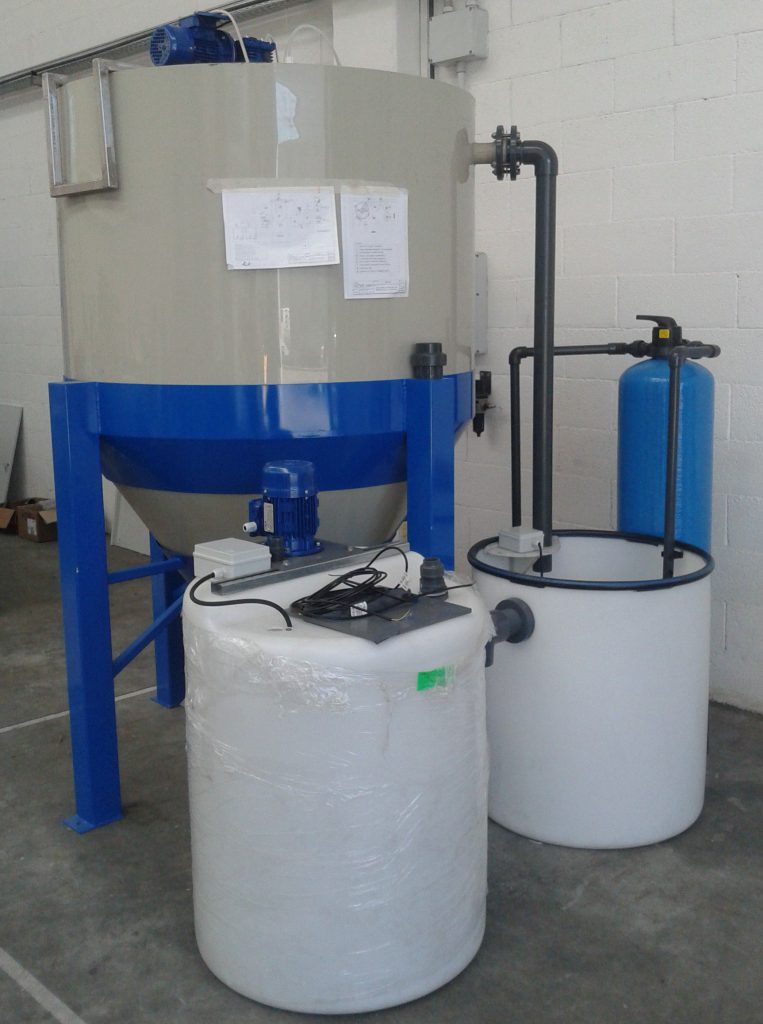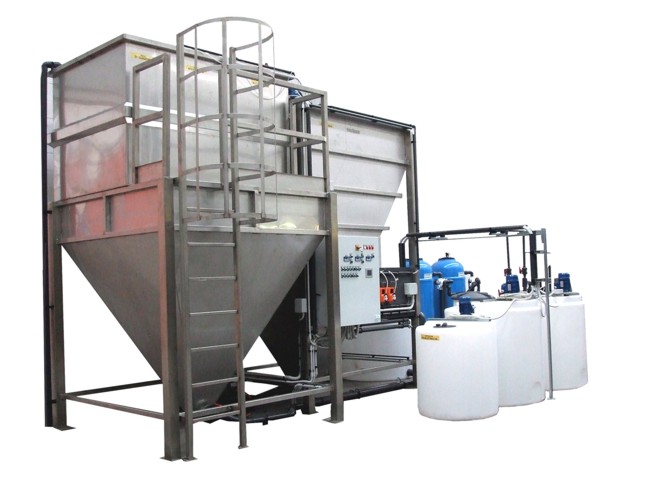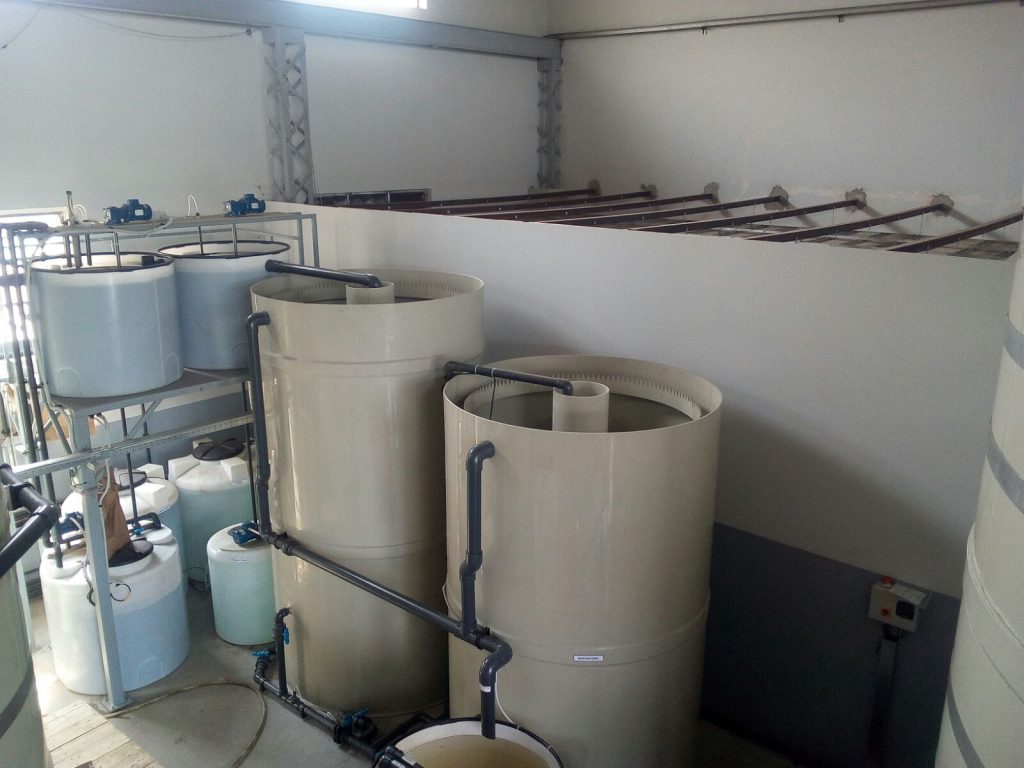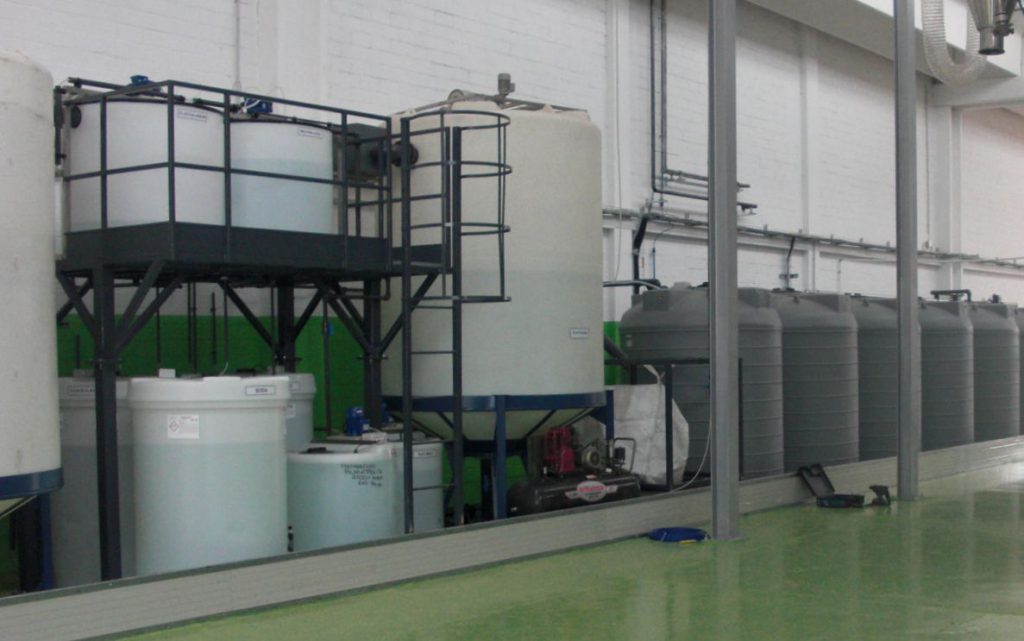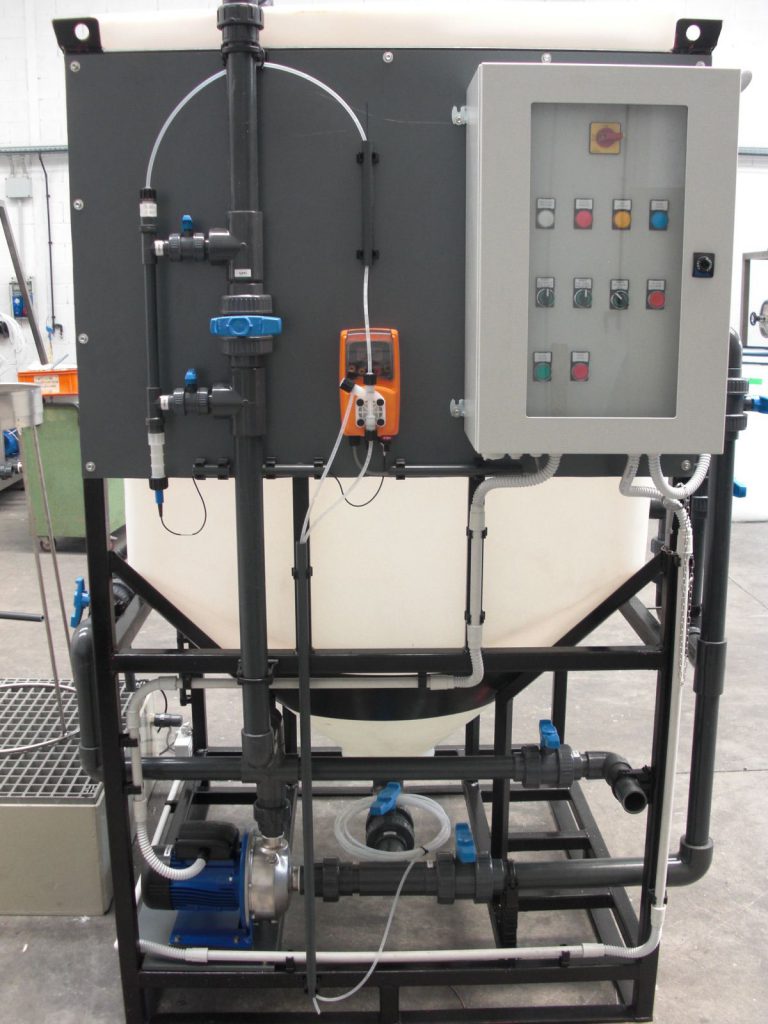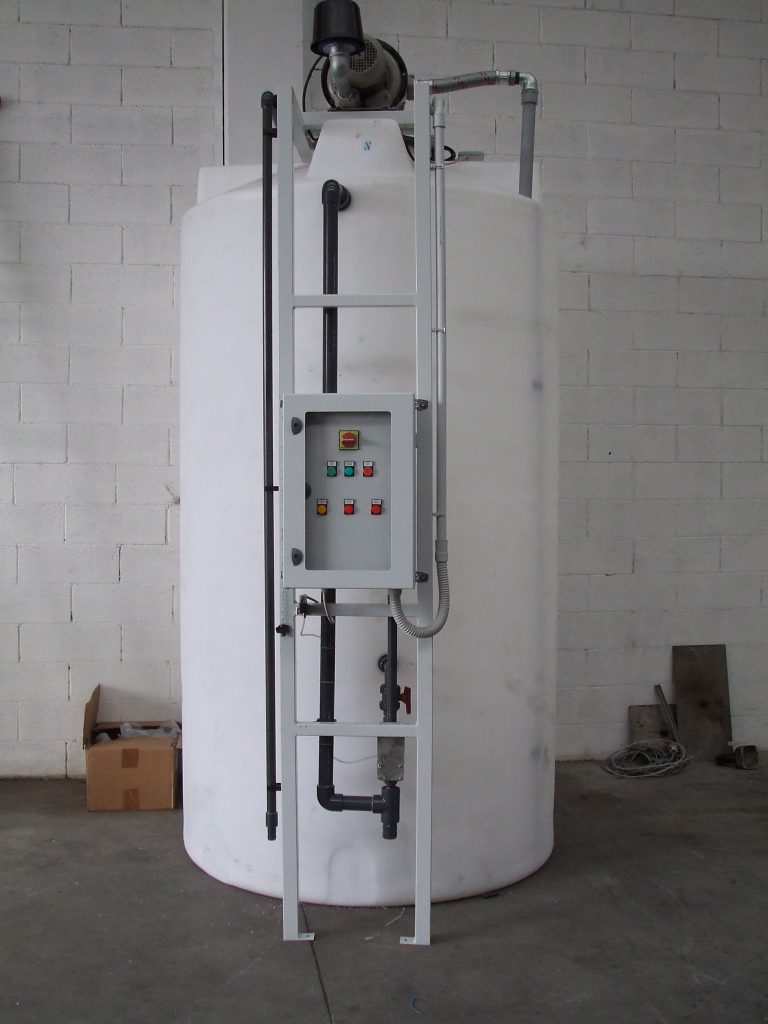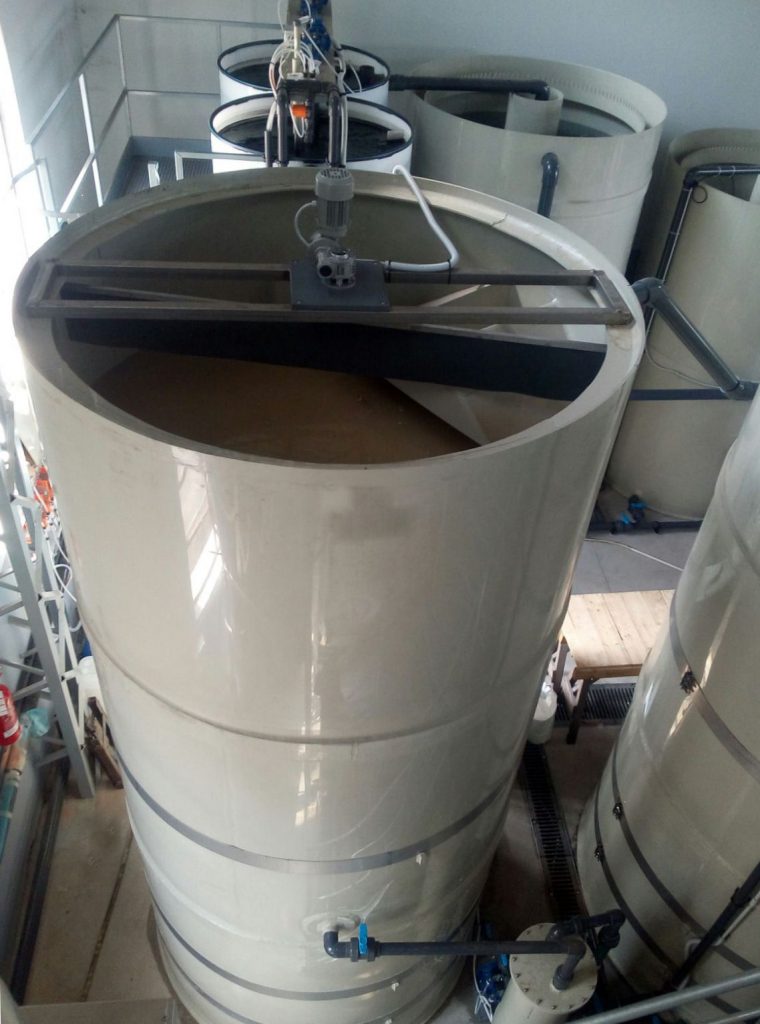Tumbling or vibratory finishing is a preliminary metal-working operation to remove residual burrs from stamping or casting work.
Tumbling is used at various levels, for deburring, cleaning, removing oxidation and polishing the metal surface.
Abrasive material is used for tumbling, with technologies normally defined dry vibratory finishing and wet tumbling, the most used by industry and the most performing is wet tumbling, this tumbling is composed of a vibrating screen or horizontal tumbler filled with abrasive material of different shape and hardness.
Tumbling or vibratory finishing times are very variable, and depend on the sanding result that have to be obtained, the tumbler during its handling process contains the abrasive material, the metal material to be processed and the water containing chemical products such as surfactants or chemical reagents to soften the surface of the metal.
The tumbling process produces a wastewater with a very high concentration of metal and surfactants, this sector requires wastewater purification plants of the chemical-physical type.
These tumbling water treatment plants must avoid the increase in salinity and must be able to dispose of a considerable amount of sludge hydroxide in relation to the total aqueous volume.
Chemical physical wastewater treatment plants for tumbling wastewater are essentially composed of neutralization, flocculation and sedimentation stages, after these stages the wastewater is fed into a sludge dewatering system.
The treated tumbling effluent uses filter bags or a filter press to dewater the sludge, the filtered water coming out of the chemical physical treatment plants is sent back to the tumbling process to resume its sanding cycle inside the tumblers.

